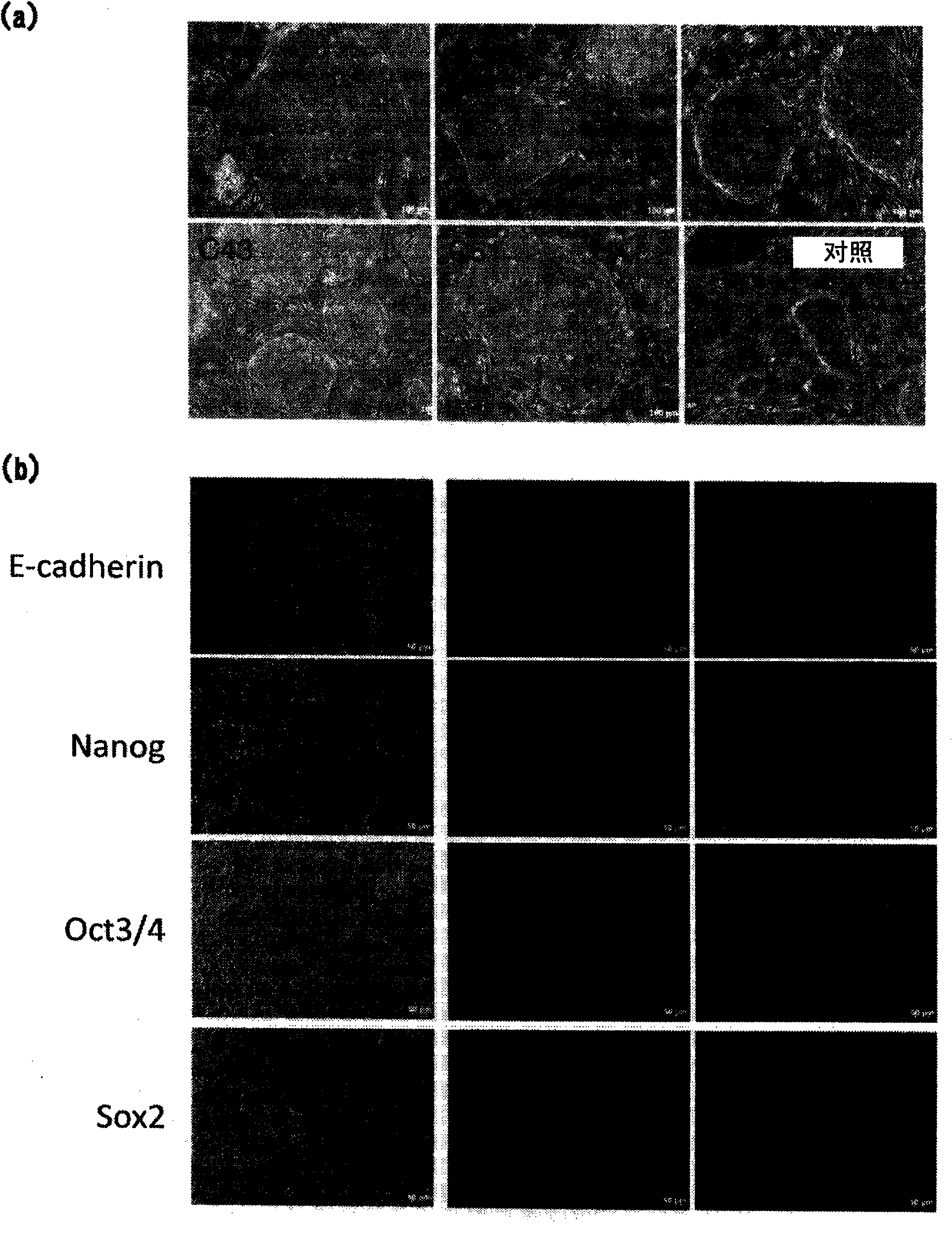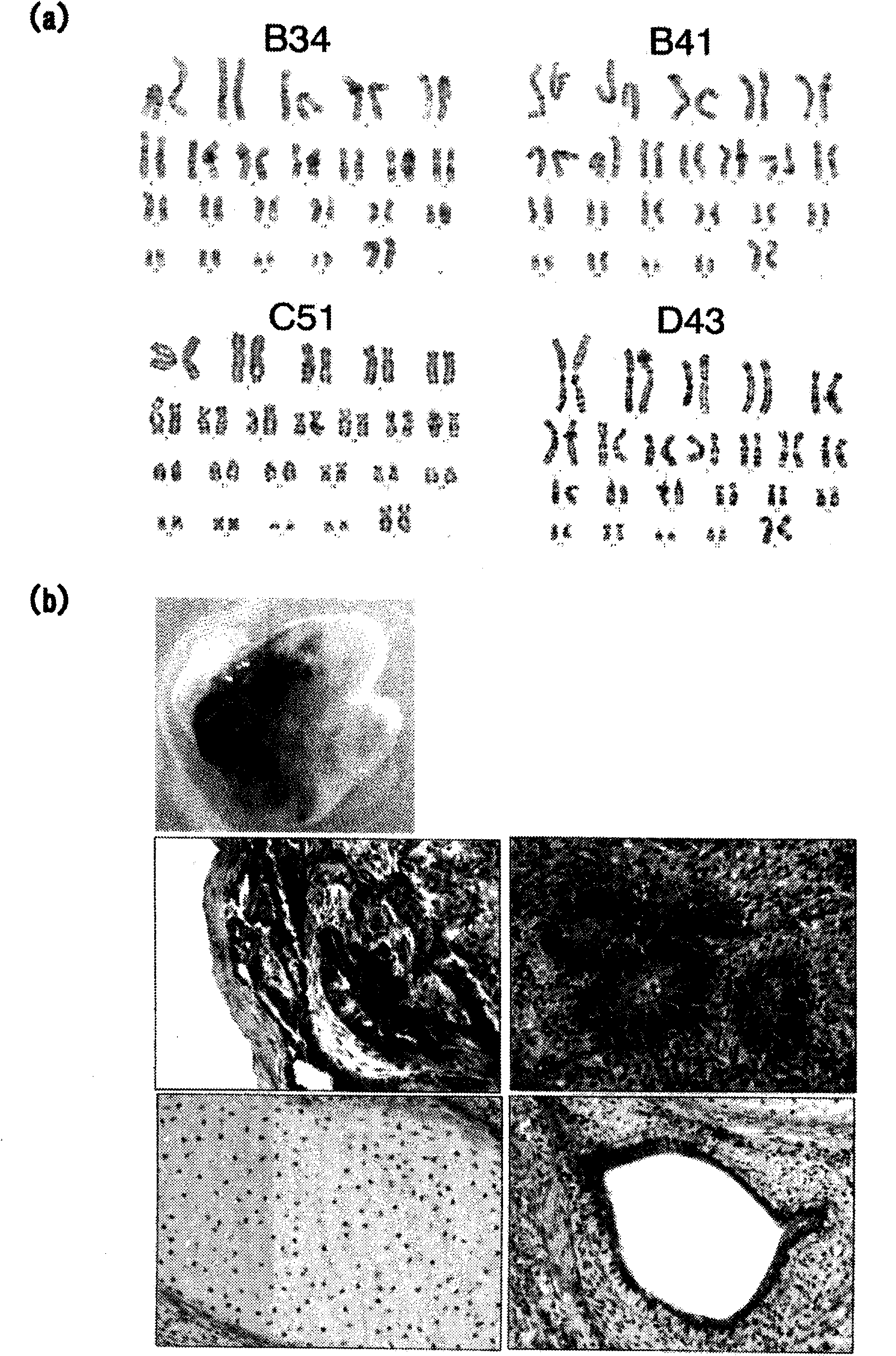Ips cell having differentiation propensity for corneal epithelium
A technology of corneal epithelial cells and corneal epithelium, which is applied in the field of corneal epithelial differentiation-oriented iPS cells, can solve the problems of differentiation and induction of corneal epithelium, and achieve high safety effects
- Summary
- Abstract
- Description
- Claims
- Application Information
AI Technical Summary
Problems solved by technology
Method used
Image
Examples
Embodiment
[0128] Hereinafter, the present invention will be described in detail based on examples and the like, but the present invention is not limited thereto.
[0129] (I) Production of iPS cells derived from ocular epidermal cells
[0130] Human-derived corneal endothelial cells, surrounding junctional tissues, etc. are removed from the input sclerocorneal sheet for research, and only the corneal and conjunctival epithelial layer of the ocular surface is isolated by dispersion processing. The resulting epithelial cells were made into single cells by trypsin treatment, and cultured in a 1:1 mixed medium of NIH / 3T3 cell culture supernatant and fresh KCM medium.
[0131] Next, lentiviral vectors each carrying human Oct3 / 4, Sox2, Klf4, and c-Myc (Four Yamanaka factors) were infected in the proliferated ocular surface-derived epithelial cells. After 2-4 days after infection, the cells were re-inoculated into an iPS cell culture system (on MEF feeder cells in iPS medium), and cultured ...
PUM
 Login to View More
Login to View More Abstract
Description
Claims
Application Information
 Login to View More
Login to View More - R&D
- Intellectual Property
- Life Sciences
- Materials
- Tech Scout
- Unparalleled Data Quality
- Higher Quality Content
- 60% Fewer Hallucinations
Browse by: Latest US Patents, China's latest patents, Technical Efficacy Thesaurus, Application Domain, Technology Topic, Popular Technical Reports.
© 2025 PatSnap. All rights reserved.Legal|Privacy policy|Modern Slavery Act Transparency Statement|Sitemap|About US| Contact US: help@patsnap.com



